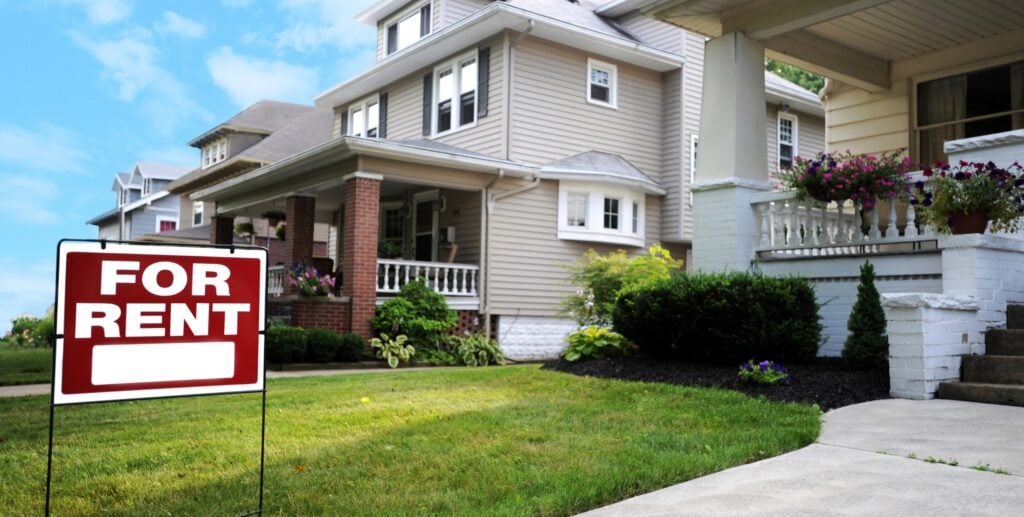In This Article
Every landlord longs to fill their rental units quickly. In many cities, finding tenants is the least of a landlord’s problems.
According to a recent report from RentCafé, landlords are struggling to keep up with demand for their dwellings as competition among tenants for vacant units has reached new highs. Some rental markets are filling up so quickly that developers cannot build housing fast enough.
Recent headlines about dismal home sales in South Florida have led to increased competition for housing among tenants, with Miami being RentCafé’s hottest rental market, followed by Chicago. However, demand for rentals in the Magic City and Windy City is for different reasons.
Why Rental Demand Is So Intense
Affordability and high mortgage rates
This is hardly a new narrative. High mortgage rates have directly influenced new homeownership and increased the demand for rentals.
This is particularly true in pricey housing markets such as Miami. Miami’s broad-based demand is driven partly by its climate, lack of Florida state income tax, and amenities. RentCafé data showed that Florida was the most in-demand region for apartment seekers at the start of the summer moving season.
Additionally, Miami attracted corporations, startups, and affluent tenants, causing apartments to be filled in just 32 days. There were 19 renters for each available unit, more than twice the national average. The limited supply resulted in 71.8% of renters renewing their leases, which pushed occupancy up to 96.5%.
Supply cannot keep up
Every real estate market is about supply and demand, but in Chicago, which has a history of rezoning, keeping its suburbs, such as Aurora, Naperville, Joliet, and Elgin, reserved for predominantly single-family homes, finding rental accommodation here is tough.
Thus, 60% of current tenants chose to renew their leases at the start of the moving season, resulting in an occupancy rate of 95.4%. Each apartment attracted 16 potential renters, filling them in an average of 29 days.
Lease renewals are congesting turnover
Lease renewals played a major role in fueling demand. At the start of the 2025 leasing season, national renewal rates climbed to 62.7%, up from 62% the previous year, according to the RentCafé survey.
Profit margin pressure pushes landlords to compete for stable tenants
It’s cheaper to keep her (and him). The cost of replacing a tenant, including painting and updating an apartment, marketing, and lost rent, can be substantial, even when a rent increase is factored in. That’s why landlords push to keep reliable tenants.
According to Zegos’ 2025 Resident Experience Management Report, the average resident retention rate for multifamily companies is 63%—the highest since tracking began in 2021. The number of property management firms targeting retention rates of 70% or higher has more than tripled in the past four years.
Other National Rental Hot Spots
Minneapolis, MN
The Twin Cities of Minneapolis and St. Paul don’t have enough housing to go around, according to the Minnesota Realtors March 2025 Housing Market Report. Zoning regulations and citizen input (commonly known as NIMBYs, or Not In My Backyard) are being blamed.
Minneapolis is the lowest out of 128 Midwest cities in new housing development, according to the MinnPost. The result has been a rental increase from 2019 to 2025, by almost $200 a month, with rents for unsubsidized apartments now more expensive than the mortgage payment on an average single-family home.
Milwaukee, WI
Dubbed “One of America’s Most Cutthroat Rental Markets” by The Wall Street Journal, Wisconsin’s largest city is experiencing extreme rental demand due to slow development.
“The lack of new supply is what’s making Milwaukee a hot rental market,” Chad Venne, the real estate program director at the University of Wisconsin-Milwaukee, told the Journal.
Brooklyn, NY
NYC rents surged at the start of 2025, according to commercial real estate website Globe St. The city’s ever-fashionable borough of Brooklyn was in high demand, experiencing a 1.4% year-over-year rental increase in September, according to Apartments.com.
Redfin’s Hottest Neighborhoods of 2025 saw the ZIP code 11238, encompassing Prospect Heights and Clinton Hill in Brooklyn, earn its coveted top spot due to year-over-year growth.
“Many companies now require workers to be in the office at least two to three days a week—so people are coming back. In my opinion, Brooklyn has become even more popular than Manhattan,” said Redfin Premier agent Ian Rubinstein in the company’s press release.
Rochester, NY
Apartment Advisor surveyed its list of the most competitive rental hot spots, with Rochester, New York, coming out on top. It attracts priced-out renters from other cities and remote and hybrid workers looking to maximize their rental dollars. Rents increased by 14% over the last year, as the city experiences a housing shortage, with a projected 24,000 new apartments needed by 2040.
Other cities featured in Apartment Advisor’s survey of high-demand metros include:
Allentown-Bethlehem-Easton, PA-NJ
Riverside-San Bernardino-Ontario, CA
Baltimore-Columbia-Towson, MD
You might also like
Final Thoughts
Prospective new landlords might have a tough time finding rentals in high-demand markets such as Miami and the Chicago suburbs, but tertiary markets surrounding these cities could provide good opportunities.
The U.S. housing market is not monolithic and liable to change. Monitor new business development (data center construction is transforming many rural areas), changing zoning laws, housing initiatives, and new transportation development for investment opportunities. Equally, finding single-family rentals in suburban areas within commuting distance might offer greater availability, fewer regulations, and less tenant churn than multifamily housing.
Smart strategizing also plays a crucial role in running a profitable rental business, and it doesn’t always mean jacking up rents at every opportunity, as many larger complexes do. As it can cost around $5,000 for many landlords to replace a new tenant, maximizing retention is imperative.
Despite record construction in some areas, the U.S. still has a chronic housing shortage, which is fueling the housing crisis. For landlords willing to scrutinize each market and strategize well, continued opportunities await.




























